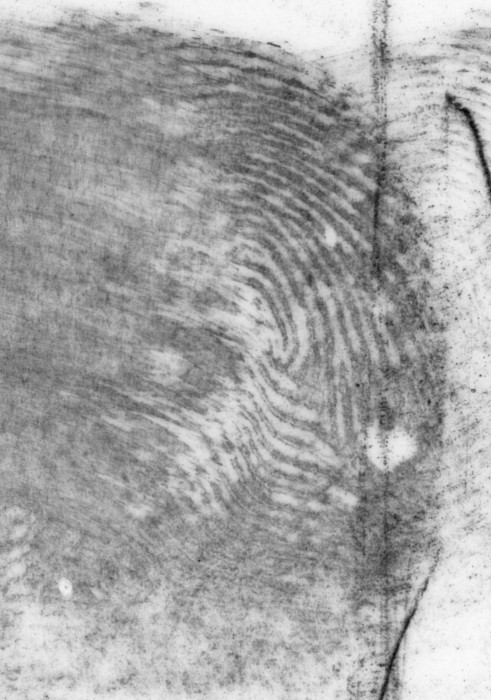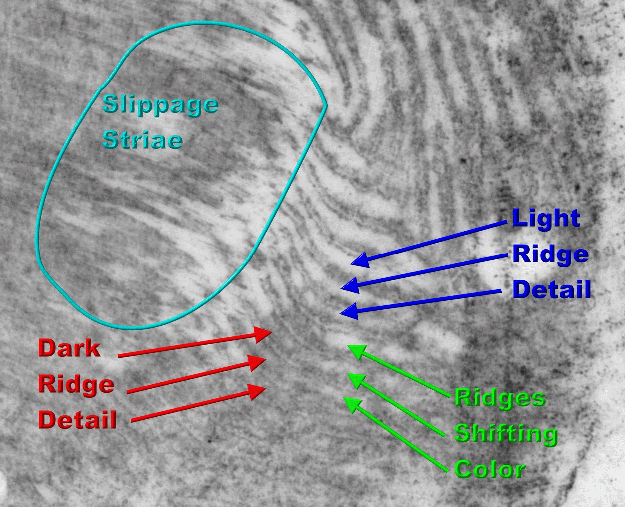| Author | Message | ||
Administrator (admin) Moderator Username: admin Post Number: 11 Registered: 07-2006 |
Amen to Ernie Hamm's posting about additive and subtractive friction ridge detail. Additionally, you can have subtractive friction ridge color (color means light or dark in this context) in situations where additive deposition is expected, and you can also have a mixture of friction ridge color within the same print. Below is a latent print exhibiting mixed-color friction ridge detail:  Click on the above image to see a larger image of the impression. Image courtesy of Latent Print Examiners from the King County Sheriff's Office, Seattle, Washington.  Close-up of a portion of the latent print where the friction ridge color shift is obvious. Click on the above image to see a larger image of the impression. Red, green and blue demonstrative lettering and markings added by Webservant. Experienced Latent Print Examiners always consider that friction ridge color may be the same or opposite the substrate color. Some indicators as to which color represents ridges versus furrows include the following:
| ||
Ernie Hamm (Unregistered Guest) Unregistered guest Posted From: 67.72.98.91 |
There are two ways in which a mark can be deposited on a surface; 'additive' in which the object (a finger) deposits a substance that attracts a developing agent (powder)or 'subtractive' in which the object removes material from the substrate and the developing agent is attracted to matter remaining on the surface. The additive form will reveal ridges and the subtractive will reveal furrows. | ||
Slightly Baffled (Unregistered Guest) Unregistered guest Posted From: cache-mtc-ad09.proxy.aol.com |
... cont'd. Voila, the prints were identical. The latent appeared to be a normal lift; black powder, clear tape on a white background. The reversal would make sense to me if white powder was used and placed on a black background, or if it was a negative from a photographed fingerprint, but this is not the case. Does anyone know of any other reason this should happen? I talked to one of our guys in the Crime Scene Unit and he couldn't think of anything other the two reasons that I stated. | ||
Slightly Baffled (Unregistered Guest) Unregistered guest Posted From: cache-mtc-ad09.proxy.aol.com |
I recently came across a latent fingerprint which I processed through the AFIS system at my agency. AFIS produced a candidate that had an unusually large amount of similar characteristics, but also irreconcilable differences. I felt strongly that these similarities were too convicing to be ignored, yet could not make a positive identification. I showed the latent and known prints to a colleague, who examined it, then pulled up the known print in AFIS and color reversed it to make the valleys appear in black and the ridges appear in white. |